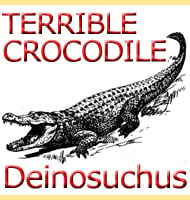Matheronodon
In Depth Although only described from a single upper jaw bone, Matheronodon is noteworthy among ornithopod dinosaurs for having teeth that are larger, but fewer in number to most other known ornithopods. The describers speculated that Matheronodon used a scissoring action to eat plants. Further Reading - Extreme tooth enlargement in a new Late Cretaceous … Read more
